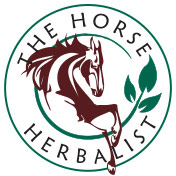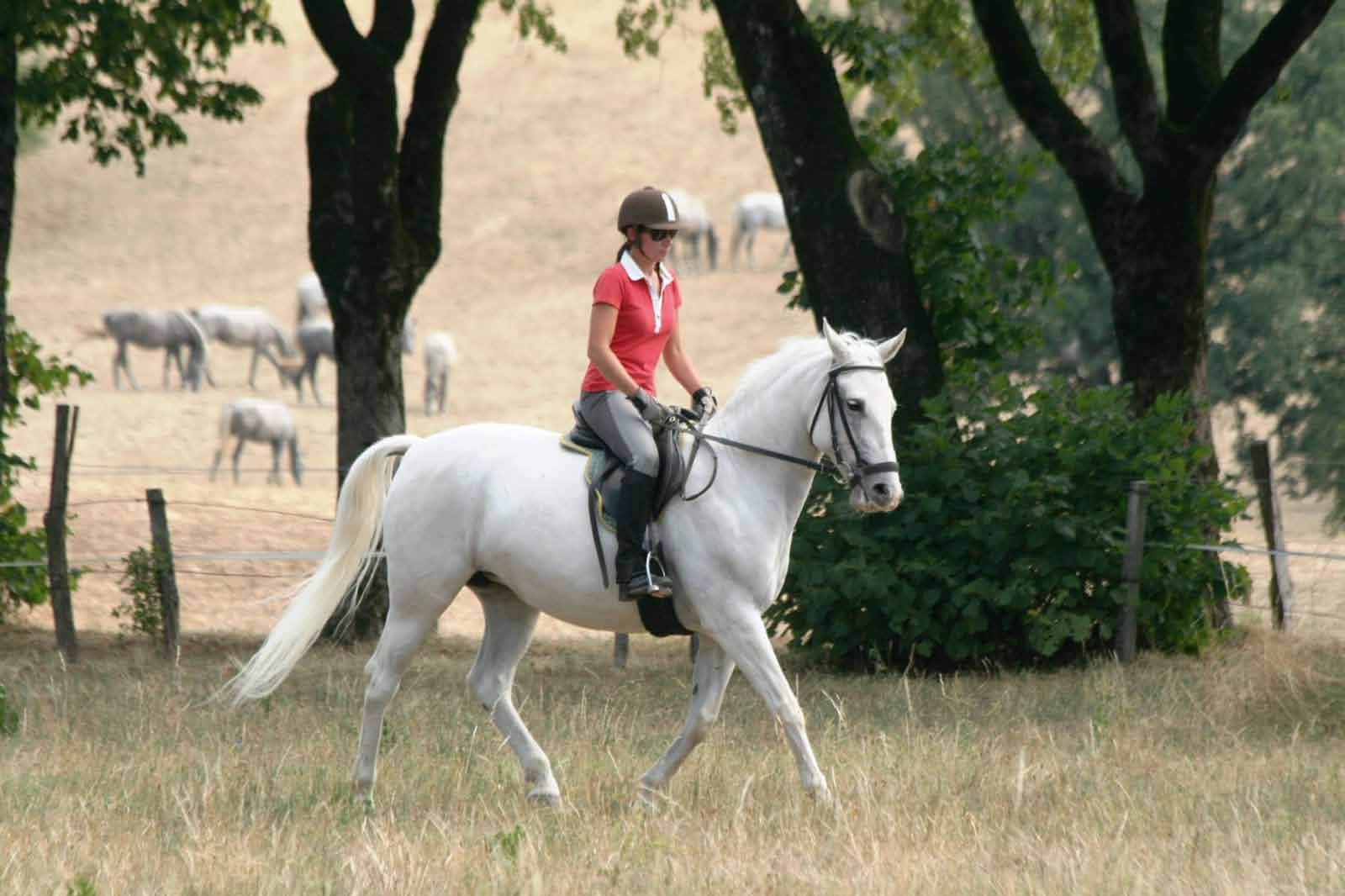
Managing the health of the whole horse with Herbs
Horses, like humans, were treated with herbal medicines up until the 1930s; in addition horses would often self-medicate as herbs grew freely in the fields and hedgerows.
With the advent of the industrial age however, came synthesised drugs and changes to agricultural practices which, over time, destroyed much of the natural flora. Medicine advanced greatly for humans and horses in the ensuing years and new drugs were formulated, including highly effective pain relievers (analgesics) and other life saving therapies.
Whilst many of these new, ‘synthetic’ medicines were derived from plants and herbs (for example aspirin from willow bark and morphine from the opium poppy), herbs took a back seat, forgotten by most until the 1950s when Juliette de Baïracli Levy, who had been treating animals with herbal medicine for many years, studied for veterinarian qualifications so that her work would be taken seriously.
Since then, we have almost come full circle, and many owners now feel it appropriate that horses receive the best of both worlds – having veterinarians, herbalists and complementary practitioners collaborating to get the very best outcome for the individual horse.
WHAT’S BEST FOR THE HORSE?
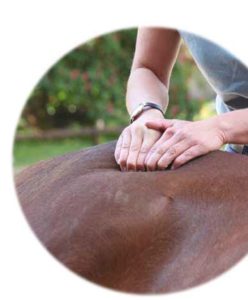 In acute situations such as accidents, emergencies and life threatening illnesses, always call a vet who will prescribe life saving allopathic medicines (those that aim to fight disease by initiating effects that are incompatible with those being treated). However, in an acute situation or a serious illness the veterinarian’s work can be supported by herbal medicine. An example is antibiotics and echinacea, which may be used at the same time – the antibiotic is fighting the bacteria whilst echinacea boosts the body’s immune system. Another example is homeopathic arnica, which can also be used in conjunction with other medicines. In fact, in the 1960s renowned homeopathic veterinarian George McLeod wrote that homeopathic arnica should be considered a routine remedy for all injuries and bruising. It can limit the scope of subcutaneous haemorrhage and hasten the resolution of blood clots and haematoma.
In acute situations such as accidents, emergencies and life threatening illnesses, always call a vet who will prescribe life saving allopathic medicines (those that aim to fight disease by initiating effects that are incompatible with those being treated). However, in an acute situation or a serious illness the veterinarian’s work can be supported by herbal medicine. An example is antibiotics and echinacea, which may be used at the same time – the antibiotic is fighting the bacteria whilst echinacea boosts the body’s immune system. Another example is homeopathic arnica, which can also be used in conjunction with other medicines. In fact, in the 1960s renowned homeopathic veterinarian George McLeod wrote that homeopathic arnica should be considered a routine remedy for all injuries and bruising. It can limit the scope of subcutaneous haemorrhage and hasten the resolution of blood clots and haematoma.
However, horse owners do need to ensure they are guided by a fully qualified equine herbal practitioner who will be totally knowledgeable and aware of all drug/herb interactions and contra-indications. The prescribing vet, or herbalist, should always be informed if a horse is also receiving treatment from another source.
Chronic conditions can linger after an acute episode ends so the use of herbal medicine – in conjunction with your rehabilitation plan – is recommended. For chronic conditions like arthritis for example, conventional treatments may be supplemented with appropriate medicinal herbs. These do contain active constituents so it is always important to seek expert advice before usage. Useful, safe, anti-inflammatory dry herbs, purchased from a good commercial supplier to aid an arthritic horse, are Boswellia serrata, Devil’s Claw (Harpagophytum procumbens only, not other species), Nettle leaves, Rosehips (high doses) and Turmeric (Curcuma longa).
Whilst many believe herbal supplements to ‘be safer’ than synthetic drugs, there are some herbs that do have drug-like effects and may alter how a particular body system functions; as such they should be afforded the same respect as any ‘conventional drug’.
WONDER DRUGS
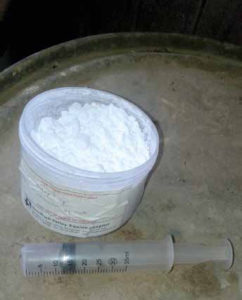 Aspirin was one of the first ‘wonder drugs’ produced. The name ‘aspirin’ comes (in part) from Spiraea, a biological genus of shrubs that includes natural sources of the drug’s key ingredient salicin. Ancient Egyptians had used white willow bark as a remedy for aches and pains, unaware that it was the salicin in the bark that was reducing body temperature and inflammation.
Aspirin was one of the first ‘wonder drugs’ produced. The name ‘aspirin’ comes (in part) from Spiraea, a biological genus of shrubs that includes natural sources of the drug’s key ingredient salicin. Ancient Egyptians had used white willow bark as a remedy for aches and pains, unaware that it was the salicin in the bark that was reducing body temperature and inflammation.
Aspirin may cause stomach ulceration whereas white willow bark is gentler on the stomach.
Bayer scientists developed the modern-day version of Aspirin – acetylsalicylic acid – in 1899 when they isolated salicylic acid from salicin and buffered it with sodium and acetyl chloride to create a concentrated form of the medicine that was easily tolerated by people.
Many pharmaceutical compounds are created when scientists identify and isolate the ‘active’ constituent from a plant and then find a way to synthesise it.
Herbal medicine on the other hand uses part or all of the plant so all the constituents of that plant can interact to produce a beneficial outcome (work synergistically). Aspirin may cause stomach ulceration whereas white willow bark is gentler on the stomach. White willow bark is used by both human and equine herbal practitioners today for the treatment of pain and inflammation associated with arthritis. This herb should not be used in known instances of allergy to salicylates (organic chemicals found naturally in many herbs, vegetables, fruits and nuts).
ANTI-INFLAMMATORIES
Synthetic cortisone is a glucocorticoid (steroid hormone) originally derived from the adrenal glands of cows; scientists first synthesised it in the 1940s and it was hailed a miracle drug due to its highly effective anti-inflammatory properties. It can also be synthesised from plant steroids.
Cortisone suppresses the immune system, reduces inflammation and attendant pain and is frequently used for skin allergies, treating shock, and injecting the joints of performance horseswith joint injury or disease such as arthritis (triamcinolone for example). Some practitioners inject ‘normal’ joints as a preventative, though there is no literature to support the rationale of this practice.
The horse naturally produces its own cortisone in the adrenal glands – it plays a role in metabolism and stress. Studies have shown that stimulation of acupuncture points on the horse can result in an increase in the body’s own cortisol (cortisone). Administration of synthetic glucocorticoids should be done with caution as some steroid injections may cause laminitis in some horses.
Studies have shown that stimulation of acupuncture points on the horse can result in an increase in the body’s own cortisol (cortisone).
Injecting joints is a common strategy to reduce joint pain; however overuse of cortisone reduces collagen production and may cause soft tissue mineralisation (such as in ligaments and tendons), tendon fibre necrosis (death), and painful tendon and ligament ruptures. Medication in general, for humans and horses, has gone too far in some cases; the benefits must continue to outweigh the risks, and prudent use is the key.
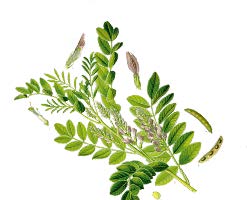
Liquorice
Liquorice root, Glycyrrhiza glabra (this species of glycyrrhiza only), has a powerful influence on steroid hormone function. It increases the anti-inflammatory action of cortisol, and antagonises some of its less desirable effects. These findings have important clinical significance for the use of liquorice to aid the withdrawal of steroidal anti-inflammatory drugs. However, horse owners need to be aware that this is medicinal liquorice root and should not be confused with liquorice confectionary.
Aspirin may cause stomach ulceration whereas white willow bark is gentler on the stomach.
Quality Echinacea angustifolia and Echinacea purpurea root will boost the suppressed immune system also.
Bute
The non-steroidal anti-inflammatory drug (NSAID) Phenylbutazone – commonly known as ‘bute’ – was synthesised in 1948. It is one of the most widely used drugs in horses dueto it being an inexpensive and highly effective treatment that can be given in several forms (intravenously or orally as a powder or paste). Bute was used as a treatment for rheumatoid arthritis and gout in humans but in the 1950s (in the USA) approval was removed and the drug no longer marketed due to adverse health effects in people taking the drug at the recommended dose for prolonged periods of time; in other countries, it is rarely used in human medicine today as it is known to induce blood disorders.
Bute sensitivity is often undetermined or undiagnosed. The onset of any negative effects can show up as early as a couple of days or signs may not be apparent for several days to several weeks. Signs may be slow, then a sudden onset of diarrhoea, weight loss, colic, loss of appetite, lethargy, pitting oedema on abdomen or chronic colic.
Inflammation and pain are part of the healing process; pain reminds us (and our horses) to rest, thus preventing further damage.
THE HEALING PROCESS
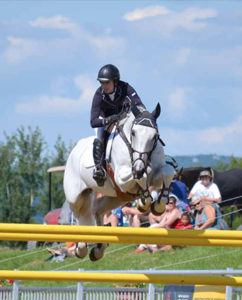 Masking pain allows horses to continue racing, jumping, exerting themselves etc., therefore compounding the injury, or worse, totally breaking down. As such, bute should be reserved for use by veterinarians in acute cases or in emergencies where inflammation must be reduced rapidly. Note that whilst bute used to be readily available to horse owners for many years, it is now more strictly regulated and is classed as a prescription medicine, meaning owners cannot purchase this product in Australia (legally) without a written prescription from their veterinarian.
Masking pain allows horses to continue racing, jumping, exerting themselves etc., therefore compounding the injury, or worse, totally breaking down. As such, bute should be reserved for use by veterinarians in acute cases or in emergencies where inflammation must be reduced rapidly. Note that whilst bute used to be readily available to horse owners for many years, it is now more strictly regulated and is classed as a prescription medicine, meaning owners cannot purchase this product in Australia (legally) without a written prescription from their veterinarian.
How many horses, both competition and recreational horses, are maintained with the use of bute, then ulcer drugs to combat the effects of the bute and so it goes on? Horses in high exertion disciplines are dying or breaking down, due to bleeding, heart attack, snapping bones or blowing tendons. A high percentage of these horses will have a history of long term drug use, misuse or abuse, often prescribed.
Prudent use of drugs for horses is the key. Allopathic drugs are invaluable when used appropriately, but everyone needs to know the dangers of overusing any drugs. (or herbs) and learn what alternatives are available as a follow up after a few days once a drug has had the desired effect. This message is incredibly important. We have already entered the age where many antibiotics have been rendered ineffectual due to overuse.
People should question why their horses bleed, have ulcerated guts, blow their tendons or suffer incurable diarrhoea.
BUTE ALTERNATIVES
As an alternative to bute, combinations of herbs have been used traditionally for musculoskeletal inflammation. These may typically contain herbs such as boswellia, celery seed, devil’s claw, turmeric, white willow bark, guiacum or rosehips. Topically, an Aloe barbadensis bandage will give a rapid reduction of any swellings; it’s also a pain inhibitor. Aloe barbadensis plants are easy to grow, they do well in the ground or in pots although they don’t tolerate frost.
Garlic, a natural antibiotic, may be used as a follow-up to antibiotics. Use fresh cloves of Australian grown organic garlic (they haven’t been irradiated or processed); 3-4 chopped cloves daily in the feed for one to two weeks. Exercise caution as high doses of therapeutic garlic (not the cheap, dry granules) used consistently over a long period may cause Heinz body anaemia (due to damaged red blood cells).
MODERN OUTLOOK ON HERBS
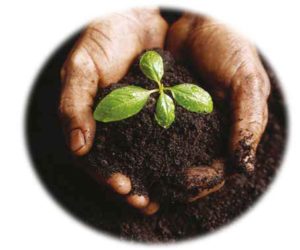 There has been much negative media surrounding herbal and complementary therapies, scare tactics and unsubstantiated arguments.
There has been much negative media surrounding herbal and complementary therapies, scare tactics and unsubstantiated arguments.
Modern phytotherapy (the use of plants/plant extracts to prevent and treat disease) is centred on the science behind empirical knowledge. Based on this, there are different ways that herbs can be used; in fresh or dried form, they can be made into teas, tinctures (dissolved in alcohol), pessaries (inserted into the vagina to treat infection or as a contraceptive) or poultices, foot baths, inhalations, oils and ointments.
The horse owner’s responsibility with using herbs is to be knowledgeable about what they are buying and from where it is sourced. For example, there is a huge difference between inorganic chamomile from China and Australian organically grown, chamomile. If tested, the organically grown Australian product would be expected to show a higher level of bisabolol hence have higher therapeutic value. Also, significant differences in the quality of organically grown chamomile for the commercial dry market, and the chamomile accepted by the practitioner-only herbal extract manufacturers, exist. The herbs used to make practitioner-only herbal extracts (human grade) all go through extensive testing before the batch is purchased. Once past the initial testing each batch goes through various multiple tests for quality assurance. This guards against substitution of species, adulteration of herbs and poor quality of herbs. The processing of herbs at this level falls under the regulations of the Therapeutic Goods Administration (TGA), just like allopathic drugs. Herbs can vary enormously in quality and this means the effect felt can also vary enormously.
The horse owner’s responsibility with using herbs is to be knowledgeable about what they are buying and from where it is sourced.
There are no quality control, testing or species identification regulations in place for the commercial dry herb market sold for animal consumption – so dry herbs need to always be sourced from a reputable retail outlet. The dry herbs are really useful as nutritional therapeutics but if a horse is sick owners should seek a practitioner whose qualifications give them access to practitioner-only products.
The use of herbs for the horse is to benefit its health, therefore advice should be sought from a qualified, experienced equine herbal practitioner for the best remedy for your horse’s condition. There are many other herbs not mentioned here that are effective in reducing inflammation in the gastro-intestinal tract or immune mediated inflammation. Horses can get more benefit from dry herbs if they are made into a tea; the water soluble components of the herb can then be released and absorbed through the buccal mucosa (under the tongue) giving direct access to the blood, bypassing the gastro-intestinal tract.
If a horse displays a definite problem or is an equine athlete it’s always best to seek the services of an experienced equine herbalist, along with your veterinarian. A good practitioner will not merely exchange orthodox drugs for herbs that may have a similar action; a good practitioner will treat the whole horse, searching for the core of the problem, rather than just treating the symptoms.
When looking for information on herbs for horses, whether it be from media, online forums, books or magazine articles, ensure it has been written by an experienced equine herbalist. There is so much misinformation at large it’s a bit like Chinese whispers; someone hears or reads something about a herb, doesn’t substantiate it, and then includes it in an article in the public forum.
FINDING A QUALIFIED EQUINE HERBALIST?
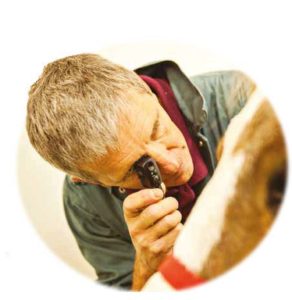 Currently, in Australia, there is not one governing body for equine herbal practitioners, which is not an ideal situation. Associations such as the Holistic Animal Therapy Organisation (HATO) and the Small Animal and Equine Naturopathic Association (SAENA) have some qualified practitioners listed.
Currently, in Australia, there is not one governing body for equine herbal practitioners, which is not an ideal situation. Associations such as the Holistic Animal Therapy Organisation (HATO) and the Small Animal and Equine Naturopathic Association (SAENA) have some qualified practitioners listed.
There are many well-intentioned amateurs out there offering advice but everyone should remember that whilst herbs are ‘natural’ they can be poisonous or detrimental to horse health.
In the horse owner’s search for the best available to help them manage their horse’s health, at the moment it is case of doing some sleuthing. Word of mouth recommendation is great, assess their qualifications, ask if they have professional insurance cover, ask if they refer to veterinarians. An equine herbalist will not diagnose your horse’s condition, a diagnosis must be gained from your vet.
FULL CIRCLE
Whilst the power of herbs has been overlooked by modern medicine and in the past 60 years, times are changing, and the pharmaceutical companies are referring to the science behind modern phytotherapy and incorporating this knowledge into making new drugs. Other ‘natural’ therapies such as acupuncture and chiropractic are being absorbed into the veterinary toolbox of treatments. As Australia comes full circle, the horse will be the one that reaps the benefits of treatment that encompasses the expertise of veterinarians, herbalists and complementary practitioners, working corroboratively to get the very best outcome for the ‘whole horse’.
This article appears courtesy of Hoofbeats Magazine from the October/November 2016 edition. Angela Davison contributes as part of the Green Horse Team, and delivers hands-on herbal advice to readers. Visit http://www.hoofbeats.com.au/ for subscription details.
